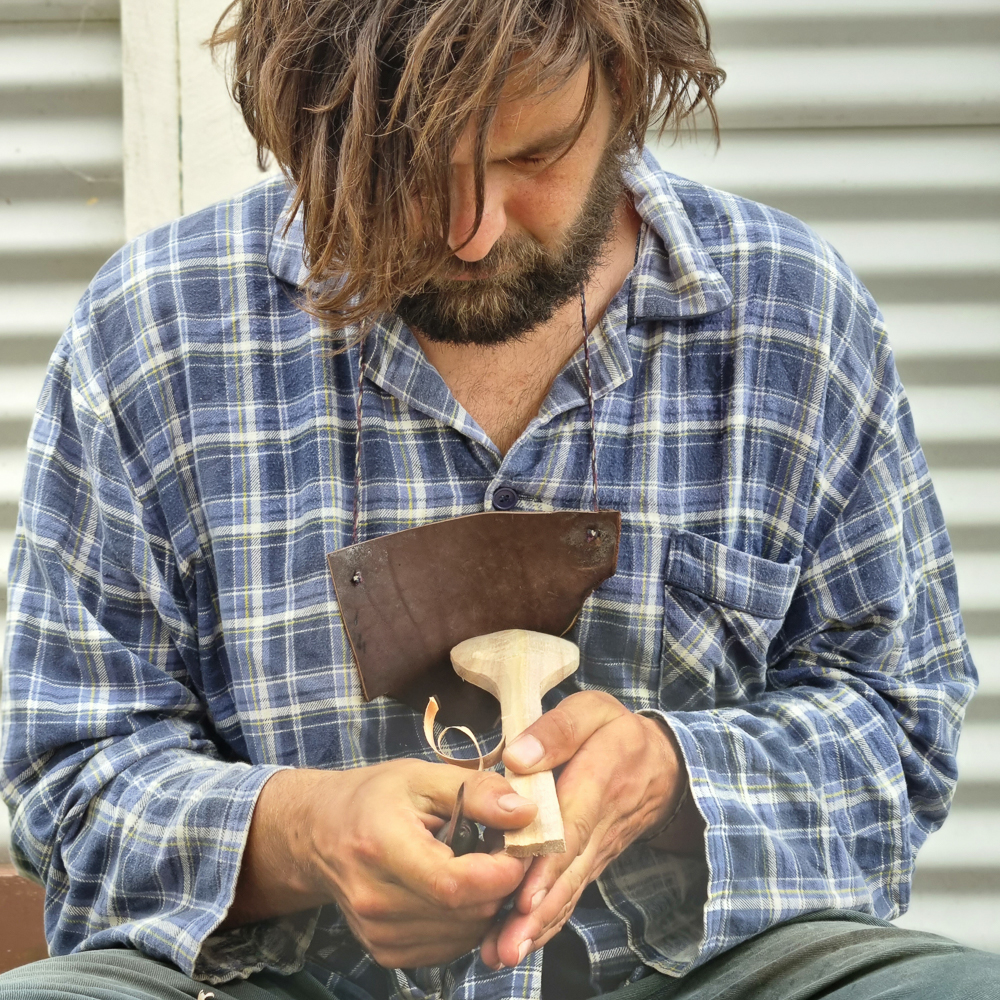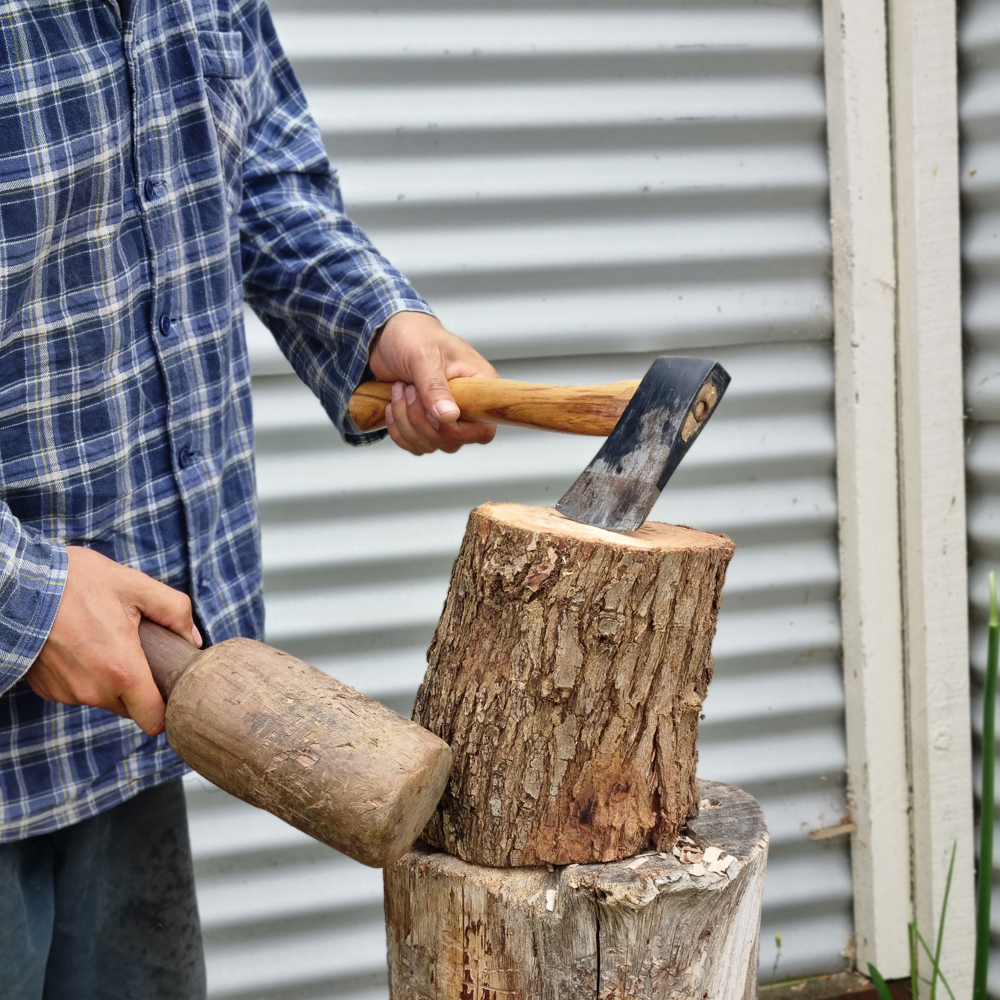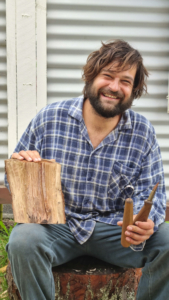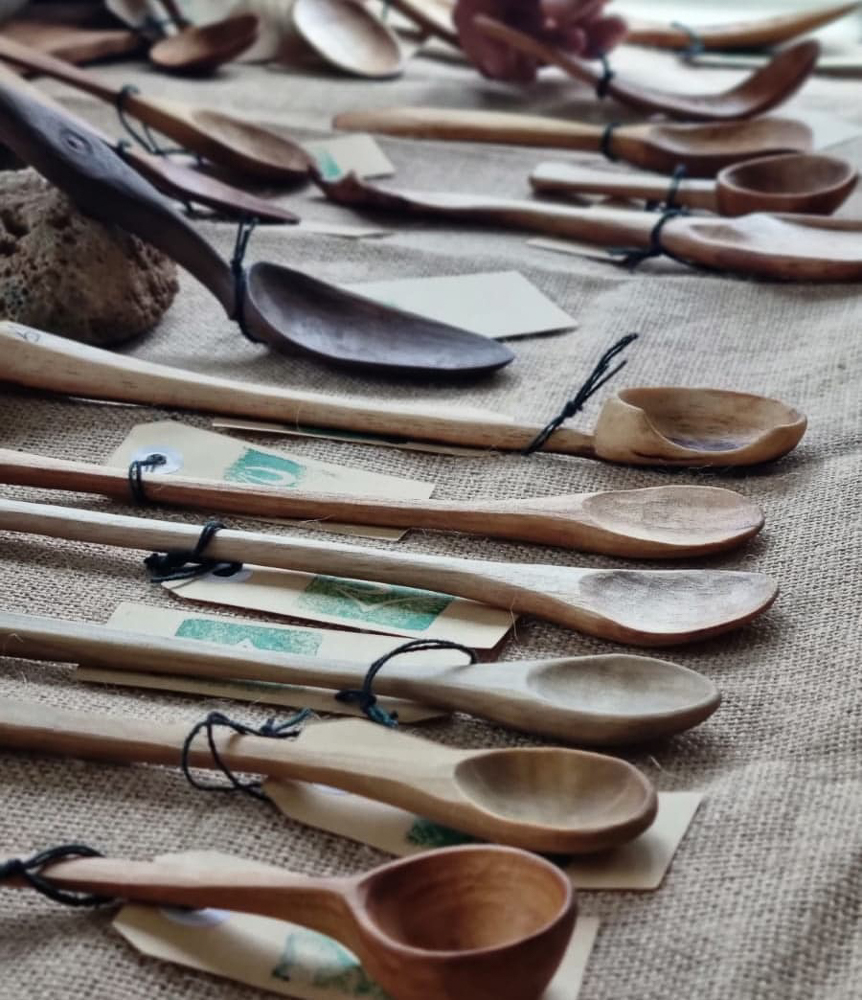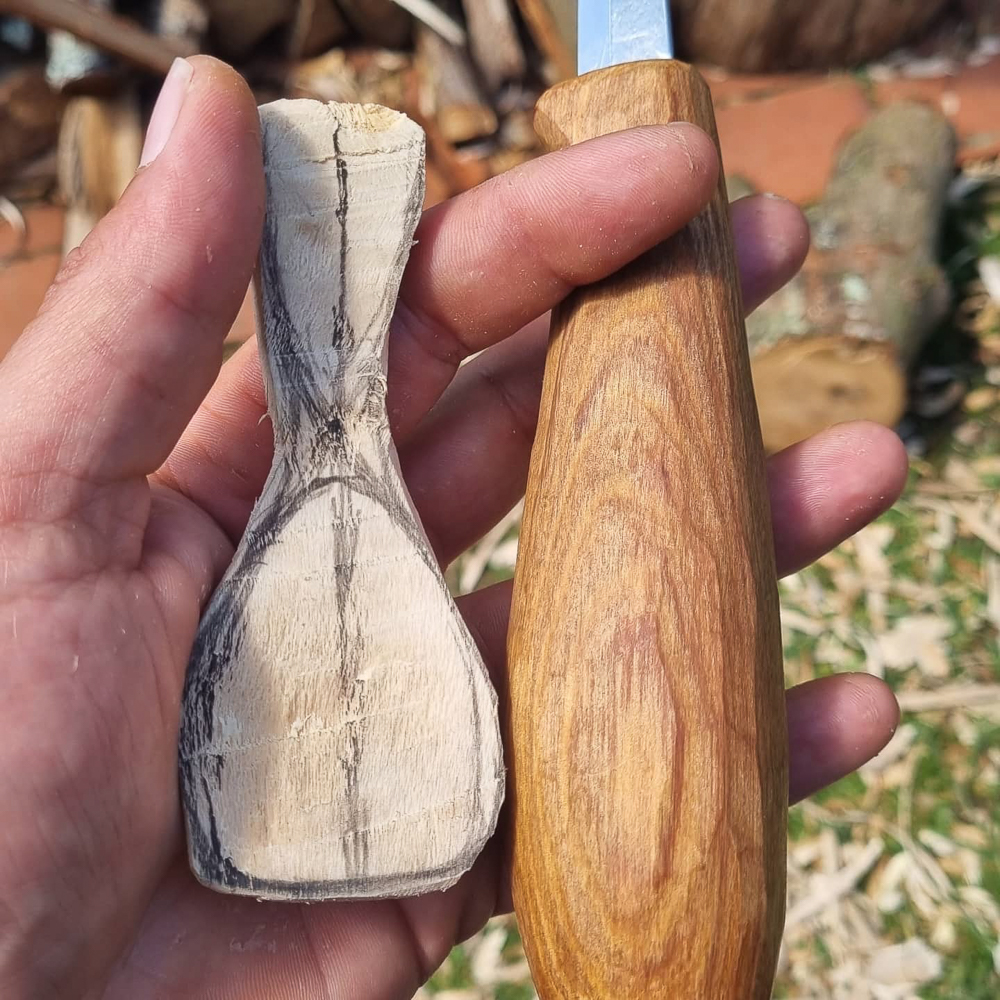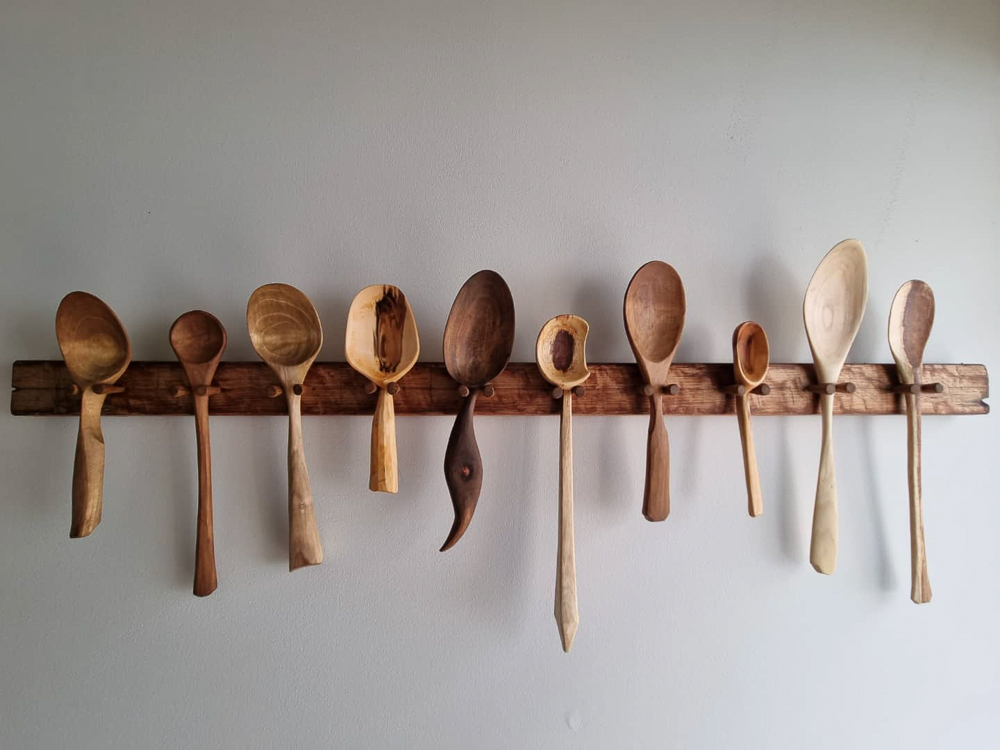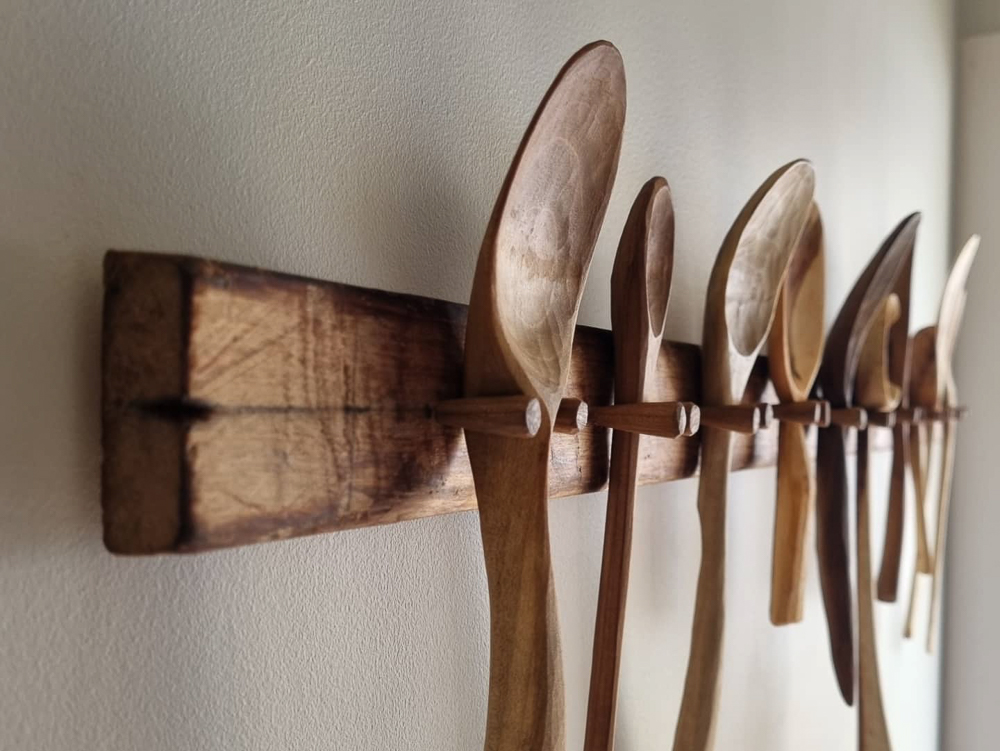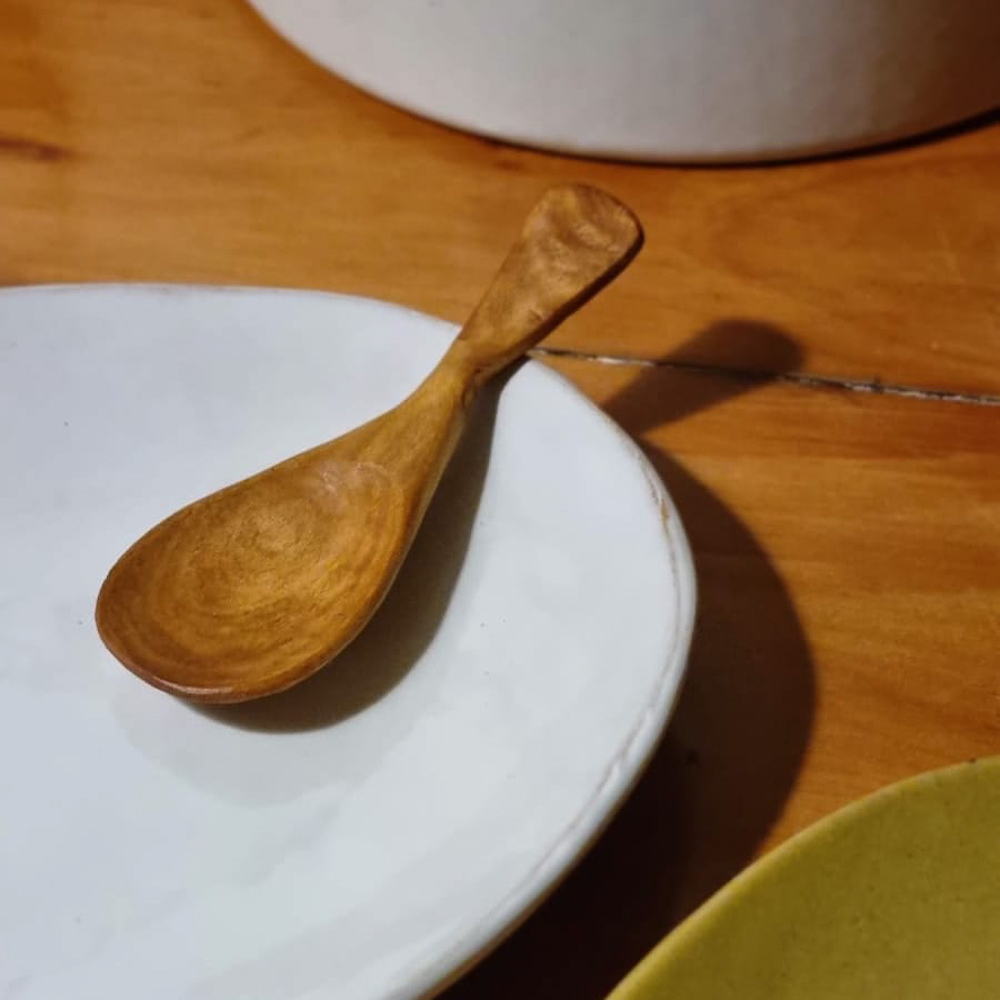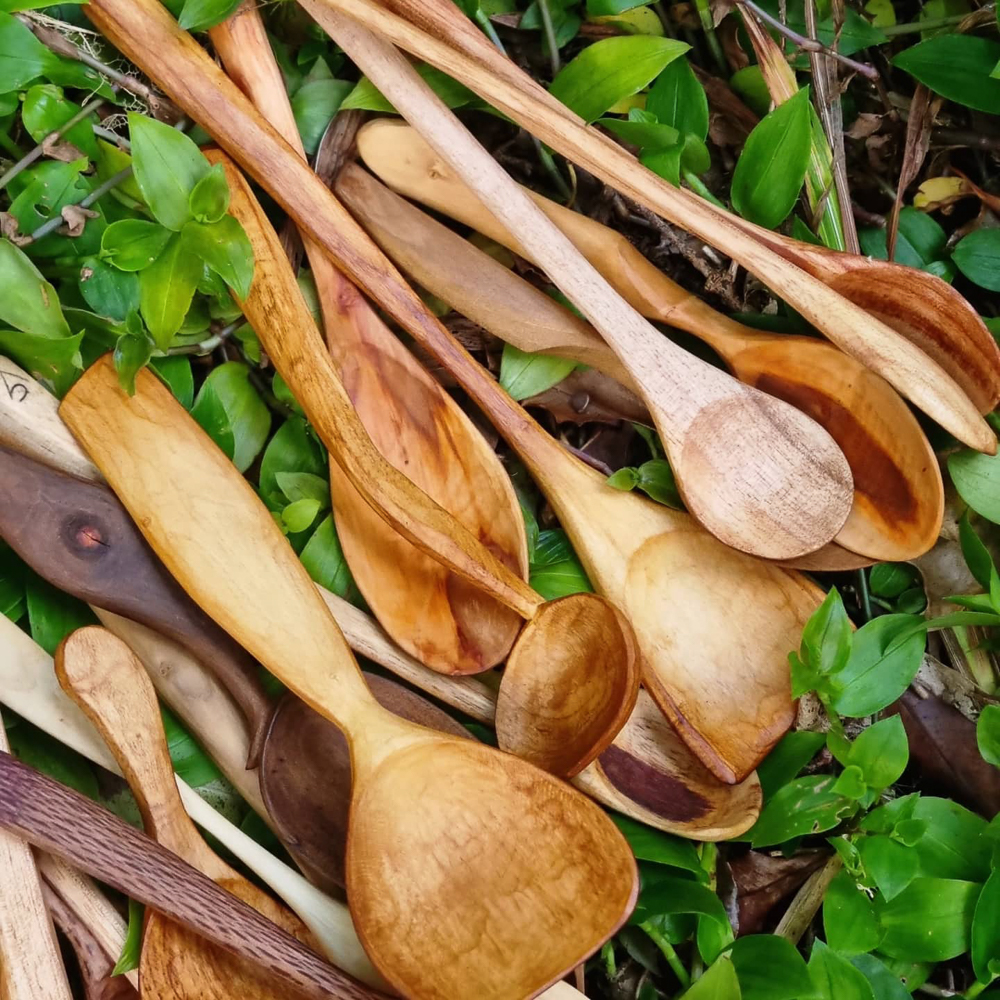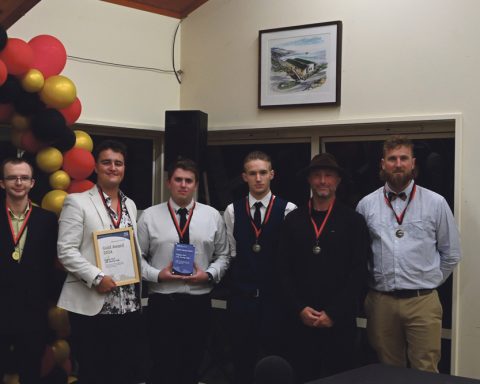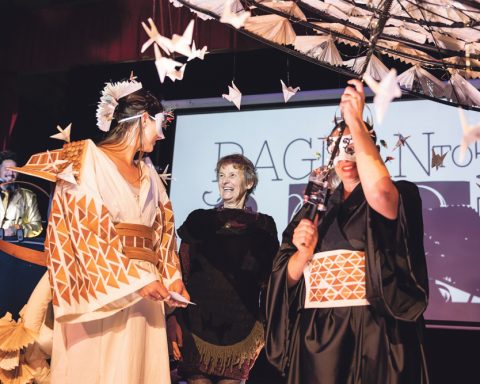Tahn Regnier-Barton can’t remember when he first picked up a knife and began carving shapes into pieces of wood.
But memories of going into the bush with his dad and whittling spears from sticks with a pocket knife were a starting point for the young carver.
Fast forward several decades, and the Raglan carver has refined his skills and now sells his stunning handmade kitchenware at the Raglan Creative Market.
“Once I started, I never really put it down. I’ve always been doing something with wood.”
Having been a hospitality worker all his working life, Tahn was drawn to creating kitchenware and, in particular, spoons of all shapes and sizes.
“I made my first ever spoon out of kauri for my mum when I was 19 and then I didn’t make another spoon again for 12 years.”
It wasn’t until ten months ago that Tahn picked up his tools to carve a spoon for his partner Tayla.
It wasn’t just any old spoon, this one was a representation of the spoon theory – a metaphor used to describe the amount of mental or physical energy a person has available for daily activities and tasks.,
“It had been a while since I had picked up my knives and I was like – that’s right I love this.”
Although this spoon was more of a decorative piece, most of Tahn’s work serve a practical purpose.
They are definitely objects of beauty but he is carving spoons to be used; whether it be for making the food or eating the food, they serve a functional role in the kitchen.
With this second spoon under his belt, Tahn spent the next few months honing his craft, researching it online and refining the rudimentary techniques he had picked up over the years.
Some of that time was spent in Australia where he went to plant some trees and make some coin.
“You get 20 cents a tree and you plant thousands in a day. The first month you don’t make a lot but if you can handle it mentally, you’ll just increase your productivity and then you’re fine.”
Tahn has been travelling to Australia to plant trees for several years and always at the back of his mind was to use the money to finance something.
“I had just started making the spoons before I left and throughout the time (in Australia), I was making spoons on the weekend. It started brewing in my mind that I could use this money to support myself for a while.”
As well as caring in wood, he also works in stone and trained under sculptor Tai Meuli.
The training has served him well in his quest to create functional forms and he has lately been carving mortar and pestles.
Not that he doesn’t like his work to be admired for its beauty, for Tahn there is an ease in making useful objects.
“I find it easier to make things functionally because there are parameters you have to fit and it simplifies the design.”
Sticking to simple and functional, his workshop is a tarpaulin set up in his backyard with a stump for sitting on, chopping block to which he added feet to raise it to his height and three basic tools.
“I carve using hand tools, an axe and knives, and I use a knife finish on my work rather than sandpaper.”
“Most of my materials are sourced locally, mostly from my mum’s small two-acre plot of land.”
The wood is in its green state when Tahn starts the process; from start to finish it takes about an hour, with 90 percent of the work done in the first stage and then after several days of drying, it takes another 15 minutes for refining and oiling.
It’s a labour of love but Tahn appreciates the process just as much as the finished product.
“When it’s crafted by hand it’s a thing of beauty and when you tell people the story behind the making, that’s all a part of it as well.”
Check Tahn out on Instagram or Facebook @tahnforest
Humans have been whittling and carving bowls, mugs, spoons and other utensils from wood for thousands of years. Originally, they were practical objects, used for everyday cooking and eating, but over time they also evolved to become decorative pieces of folk art.
Janine Jackson
